The future is already here
description: a phrase often attributed to William Gibson, suggesting that the future is unevenly distributed and already exists in some places or sectors.
69 results
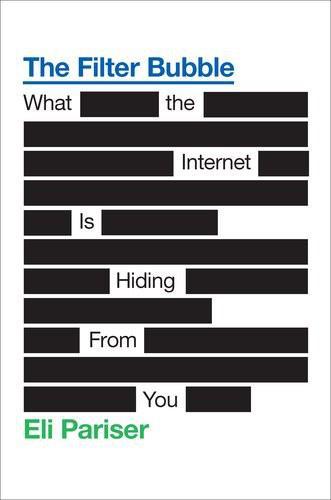
The Filter Bubble: What the Internet Is Hiding From You
by
Eli Pariser
Published 11 May 2011
The next attractive man or woman who friends you on Facebook could turn out to be an ad for a bag of chips. As Calo puts it, “people are not evolved to twentieth-century technology. The human brain evolved in a world in which only humans exhibited rich social behaviors, and a world in which all perceived objects were real physical objects.” Now all that’s shifting. The Future Is Already Here The future of personalization is driven by a simple economic calculation. Signals about our personal behavior and the computing power necessary to crunch through them are becoming cheaper than ever to acquire. And as that cost collapses, strange new possibilities come within reach. Take facial recognition.
…
And this powerful set of data—where you go and what you do, as indicated by where your face shows up in the bitstream—can be used to provide ever more custom-tailored experiences. It’s not just people that will be easier than ever to track. It’s also individual objects—what some researchers are calling the “Internet of things.” As sci-fi author William Gibson once said, “The future is already here—it’s just not very evenly distributed.” It shows up in some places before others. And one of the places this particular aspect of the future has shown up first, oddly enough, is the Coca-Cola Village Amusement Park, a holiday village, theme park, and marketing event that opens seasonally in Israel.
…
Brockton Cops Have an App for That,” Brockton Patriot Ledger, June 15, 2010, accessed Dec. 17, 2010, www.patriotledger.com/news/cops_and_courts/x1602636300/Catching-criminals-Cops-have-an-app-for-that. 195 “other images of you with ninety-five percent accuracy”: Jerome Taylor, “Google Chief: My Fears for Generation Facebook,” Independent, Aug. 18, 2010, accessed Dec. 17, 2010, www.independent.co.uk/life-style/gadgets-and-tech/news/google-chief-my-fears-for-generation-facebook-2055390.html . 197 “The future is already here”: William Gibson, interview on NPR’s Fresh Air, Aug. 31, 1993, accessed Dec. 17, 2010, www.npr.org/templates/story/story.php?storyId=1107153. 197 your identity already tagged: “RFID Bracelet Brings Facebook to the Real World,” Aug. 20, 2010, accessed Dec. 17, 2010, www.psfk.com/2010/08/rfid-bracelet-brings-facebook-to-the-real-world.html. 198 “real world that can be indexed”: Reihan Salam, “Why Amazon Will Win the Internet,” Forbes, July 30, 2010, accessed Dec. 17, 2010, www.forbes.com/2010/07/30/amazon-kindle-economy-environment-opinions-columnists-reihan-salam.html. 198 “some have termed ‘smart dust’ ”: David Wright, Serge Gutwirth, Michael Friedewald, Yves Punie, and Elena Vildjiounaite, Safeguards in a World of Ambient Intelligence (Berlin/Dordrecht: Springer Science, 2008): abstract. 199 four-year joint effort: Google/Harvard press release.
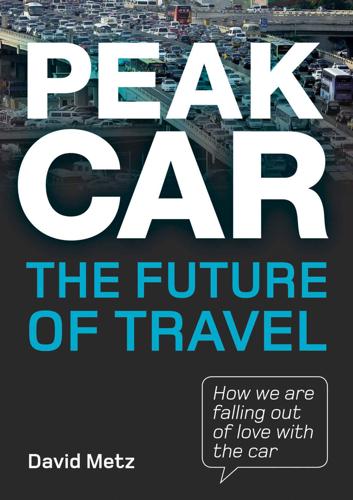
Peak Car: The Future of Travel
by
David Metz
Published 21 Jan 2014
The central argument that I make in this book is that we have come to the end of an era in which we have steadily travelled more, made possible by a succession of innovative transport technologies permitting faster travel. In the new era, we have sufficient choices and opportunities largely to meet our needs. What we now want from the transport system is better quality. I shall explore how we might achieve that outcome. William Gibson, the science fiction writer who coined the term ‘cyberspace’, said: ‘The future is already here—it’s just not evenly distributed.’ We know that the future for most countries will feature significant demographic change—larger populations, increasing longevity, more urban living at increasing density. Cities that are already meeting the needs for mobility, access and choice of growing populations allow us to glimpse a future that is already here.
…
London is a suggestive model for the innovative city, attracting people who are willing to dispense with the personal car. Car use in London is well past its peak, as a proportion of all journeys. For entrepreneurs and creative people, the car seems to be increasingly yesterday’s technology. ‘The future is already here—it’s just not evenly distributed.’ said William Gibson, the science fiction writer who coined the term ‘cyberspace’. I live an active life in an inner suburb of London with a number of travel modes at my disposal. This allows me to conclude that a future of liveable cities is indeed attainable without the car as central to urban life.
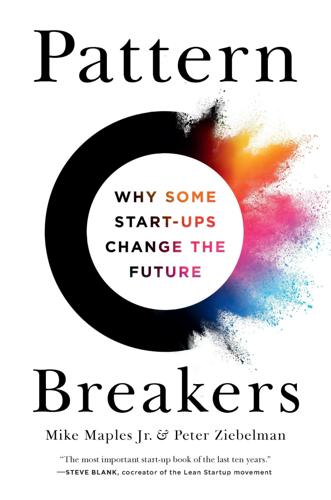
Pattern Breakers: Why Some Start-Ups Change the Future
by
Mike Maples
and
Peter Ziebelman
Published 8 Jul 2024
With the ability to pinpoint locations accurately, ridesharing networks could allow drivers and riders to effortlessly connect with each other on a massive scale, transforming the way people travel. Given the current pace of technological change, other inflections are all around us. The cyberpunk author William Gibson says it well: “The future is already here; it’s just not evenly distributed.” Those pockets of the future distributed unevenly among us are things with the potential to radically change how people live. You could be holding the potential for radical change in the palm of your hand. You could be standing next to it or sitting on it.
…
Making a case, as we have, for discovering meaningful insights raises additional questions. Where is the best place to look for them? How do you determine whether you are on to something or not? Those answers come next. 6 LIVING IN THE FUTURE Where You Will Find Your Next Insight The future is already here; it’s just not evenly distributed. —William Gibson, author, coined the term “cyberpunk” Marc Andreessen was a student at the University of Illinois in the winter of 1992, earning minimum wage as a programmer at the school’s National Center for Supercomputing Applications (NCSA). Despite his meager earnings, he found more important riches in the next-generation technology that surrounded him.
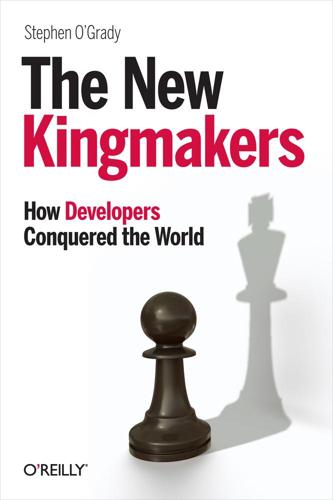
The New Kingmakers
by
Stephen O'Grady
Published 14 Mar 2013
But in reality, that is no longer true today, and hasn’t been true for years. As with IM or the iPhone, technology is increasingly being driven by bottom-up, rather than top-down, adoption. The world has changed, but only a select few in the technology industry have realized it. As William Gibson might put it, the future is already here, it’s just unevenly distributed. What does the market think of this new, non-enterprise focused future-present? Currently, Apple is the most valuable technology company in the world, and depending on the price of oil when you read this, the most valuable company in the world, period. As this book goes to press, in fact, Apple is worth more than Adobe, Cisco, Dell, EMC, HP, Oracle, SAP, Red Hat, Sony, and VMware—combined.
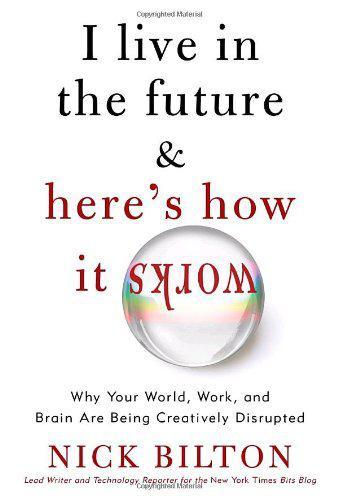
I Live in the Future & Here's How It Works: Why Your World, Work, and Brain Are Being Creatively Disrupted
by
Nick Bilton
Published 13 Sep 2010
And if the content creators don’t tell the story in this new immersive way, you may well be able to create a substitute yourself. It won’t have to be all or nothing. People who live in the city still like driving in the country on weekends—even if they drive a little faster than the people who live there year-round. 8 what the future will look like a prescription for change The future is already here—it is just unevenly distributed. —William Gibson What the Future Will Look Like: Dinner on the Moon On the run from the police in the science-fiction movie Minority Report, the character played by Tom Cruise decides to take cover in a Gap clothing store.1 There he is greeted not by a happy, breathing Gap employee but by the digital avatar of a helpful clerk.
…
What the Future Will Look Like: A Storytelling World, with Participation As the big guys wrestle with which products will produce the best and most significant experience, people like me will keep experimenting with what already has been created, demanding immediacy, personalization, networking, and easy access. I’m an early adopter of technology and excitedly embrace and try any early technologies I can get my hands on. For some, it may seem like I live in the future. Before too long, though, you will be there with me. Or as the science fiction writer William Gibson once said: “The future is already here—it is just unevenly distributed.” I realize that although these technologies are creating some amazing changes in the way we live and work, they’ve also upended entire industries and generated a great deal of fear and anxiety. Among the points I hope you will take away from this journey into what’s ahead is that such fears are a normal part of adapting to radical changes in the way we live.

Give People Money
by
Annie Lowrey
Published 10 Jul 2018
Each district has a singular, undiversified low-wage economy, with Everdeen’s focused on coal mining. Each district supports the wealth of the denizens of the Capitol, without sharing in that wealth or having access to its transformational technologies. It is a utopia within a dystopia, and brings to mind an apocryphal saying from the speculative fiction writer William Gibson. “The future is already here,” he reportedly said. “It’s just not evenly distributed yet.” That is the thing. In The Jetsons, Star Trek, and Keynes’s vision, all human necessities are provided by the state or the society. Each individual feels capable of accessing the astonishing technologies on offer, even if those technologies have eroded the need for her work or the basis for his wage.
…
“Economic Possibilities for Our Grandchildren”: Keynes, “Economic Possibilities for Our Grandchildren (1930).” help smooth transactions: Matthew Yglesias, “The Star Trek Economy: (Mostly) Post-Scarcity, (Mostly) Socialism,” Slate, Nov. 18, 2013. dystopian visions: Yglesias, “The Economics of The Hunger Games,” Slate, Nov. 22, 2013. “The future is already here”: Pagan Kennedy, “William Gibson’s Future Is Now,” New York Times, Jan. 13, 2012. ABOUT THE AUTHOR Annie Lowrey is a contributing editor for The Atlantic. A former writer for the New York Times, the New York Times Magazine, and Slate, among other publications, she is a frequent guest on CNN, MSNBC, and NPR.
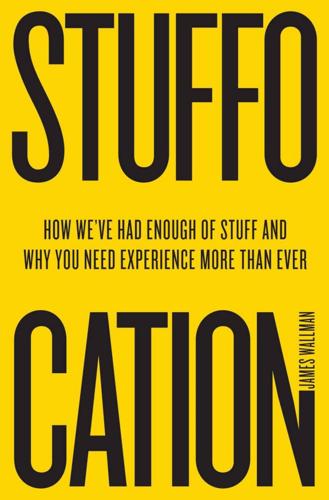
Stuffocation
by
James Wallman
Published 6 Dec 2013
Why did they listen to me? How do I know what the future holds? I don’t read tea leaves or breathe in vapours or gaze into a crystal ball. The method I use is far less esoteric, and, I like to think, a fair bit more robust. It is inspired by something a futurist called William Gibson once said: “The future is already here — it’s just not very evenly distributed”. More importantly, it is informed by a way of reading cultural change that, since it was first described in 1962, has been applied more than 5,000 times. I will tell the story of how that method was discovered, and how I use it to tell the future, in the next chapter.
…
If, in other words, you look around the present and notice an innovation – which could be a new type of computer that has no need for a keyboard, a new brand of more comfortable flip-flops, or a new way of living – and then notice that certain people are adopting it, and then that more people are also adopting it, you can, with caution, make reasonable predictions of the future. This is what cultural forecasters do. They believe, as William Gibson did, that “The future is already here — it’s just not very evenly distributed.” Their job is to observe and interrogate the noise of the present to identify signs of that unevenly distributed future. Then, using the S-curve, they make forecasts about when and how those ideas will become more widely distributed, and what the world will look like as a result.

The Internet Is Not the Answer
by
Andrew Keen
Published 5 Jan 2015
But, like the Birches’ club with its 3,000-bottle wine cellar boasting a ceiling constructed from old bottles, massively powerful and wealthy multinationals like Google and Amazon, and exclusively “open” events for the new elite like FOO Camp, aren’t quite as revolutionary as they’d have us believe. The new wine in Silicon Valley may be digital, but—when it comes to power and wealth—we’ve tasted this kind of blatant hypocrisy many times before in history. “The future is already here—it’s just not very evenly distributed,” the science fiction writer William Gibson once said. That unevenly distributed future is networked society. In today’s digital experiment, the world is being transformed into a winner-take-all, upstairs-downstairs kind of society. This networked future is characterized by an astonishingly unequal distribution of economic value and power in almost every industry that the Internet is disrupting.
…
Best known for its high unemployment and crime rates—the city’s notorious number of robberies being 206% above the US national average and its murder rate almost 350% higher than that of New York City in 20122—the only buzz in the dead sky above downtown Rochester was from police choppers. No wonder the city is now known as “the Murder Capital of New York.” “The future is already here—it’s just not very evenly distributed,” you’ll remember Gibson once said. And there are few places where the future is less evenly distributed than in Rochester, a rusting industrial city of some 200,000 souls on the banks of Lake Ontario in upstate New York. No, Rochester’s downtown definitely wasn’t worth a three-thousand-dollar private helicopter ride—unless perhaps you had, like me, come to the city in search of a quarter century of failure.

The Uninhabitable Earth: Life After Warming
by
David Wallace-Wells
Published 19 Feb 2019
This is what Bill McKibben means when he says that winning slowly is the same as losing: “If we don’t act quickly, and on a global scale, then the problem will literally become insoluble,” he writes. “The decisions we make in 2075 won’t matter.” Innovation, in many cases, is the easy part. This is what the novelist William Gibson meant when he said, “The future is already here, it just isn’t evenly distributed.” Gadgets like the iPhone, talismanic for technologists, give a false picture of the pace of adaptation. To a wealthy American or Swede or Japanese, the market penetration may seem total, but more than a decade after its introduction, the device is used by less than 10 percent of the world; for all smartphones, even the “cheap” ones, the number is somewhere between a quarter and a third.
…
“Another way of saying this: By 2075, the world will be powered by solar panels and windmills—free energy is a hard business proposition to beat,” McKibben wrote. “But on current trajectories, they’ll light up a busted planet. The decisions we make in 2075 won’t matter; indeed, the decisions we make in 2025 will matter much less than the ones we make in the next few years. The leverage is now.” “The future is already here”: The quip first appeared in The Economist in 2003. less than 10 percent of the world: IDC, “Smartphone OS Market Share,” www.idc.com/promo/smartphone-market-share/os. somewhere between a quarter and a third: David Murphy, “2.4BN Smartphone Users in 2017, Says eMarketer,” Mobile Marketing, April 28, 2017, https://mobilemarketingmagazine.com/24bn-smartphone-users-in-2017-says-emarketer.

Ghost Road: Beyond the Driverless Car
by
Anthony M. Townsend
Published 15 Jun 2020
They’ll share the road with some two billion human-driven cars and trucks (give or take a few hundred million). Even then, it seems, AVs will be but a rounding error in the global population of automobiles. But the revolution will strike with surprise, surgical precision, and overwhelming force. As cyberpunk novelist William Gibson once famously said, “The future is already here—it’s just not very evenly distributed.” The first changes we notice will occur in taxis. Most market analysts agree that all taxis in the industrialized nations will be automated by 2030. In the US, that’s 300,000 vehicles. Add in all the Ubers and Lyfts and the total is closer to 1,000,000 in all.
…
Then I Tried One,” Opinion, New York Times, October 22, 2017, https://www.nytimes.com/2017/10/22/opinion/driverless-cars-test-drive.html. 960 million people were killed: Death: A Self-Portrait, 2012, Richard Harris Collection, London, UK: Wellcome Collection, exhibition. 9time wasted in traffic: “INRIX Global Traffic Scorecard,” INRIX, accessed February 15, 2018, http://inrix.com/scorecard. 1025 million people have disabilities that limit travel: Stephen Brumbaugh, Travel Patterns of Americans with Disabilities (Washington, DC: Bureau of Transportation Statistics, 2018), https://www.bts.gov/sites/bts.dot.gov/files/docs/explore-topics-and-geography/topics/passenger-travel/222466/travel-patterns-american-adults-disabilities-9-6-2018_1.pdf. 10By 2030 . . . tens of millions: BlackRock Investment Group, Future of the Vehicle: Winners and Losers: From Cars and Cameras to Chips (BlackRock Investment Institute, 2017), 8. 10two billion human-driven cars and trucks: Daniel Sperling and Deborah Gordon, Two Billion Cars: Driving toward Sustainability (New York: Oxford University Press, 2009). 10“The future is already here”: Marianne Trench, Cyberpunk (New York: Intercon Production, 1990), YouTube video. 11a mix of both worlds: Bern Grush and John Niles, The End of Driving: Transportation Systems and Public Policy Planning for Autonomous Vehicles (Cambridge, MA: Elsevier, 2018). 11Half will end up in China: “Autonomous Vehicle Sales to Surpass 33 Million Annually in 2040, Enabling New Autonomous Mobility in More Than 26 Percent of New Car Sales, IHS Markit Says,” IHS Markit, January 2, 2018, https://technology.ihs.com/599099/autonomous-vehicle-sales-to-surpass-33-million-annually-in-2040-enabling-new-autonomous-mobility-in-more-than-26-percent-of-new-car-sales-ihs-markit-says. 11$2 trillion global auto-manufacturing industry: Roger Lanctot, Accelerating the Future: The Economic Impact of the Emerging Passenger Economy (Strategy Analytics, June 2017), https://newsroom. intel. com/newsroom/wp-content/uploads/sites/11/2017/05/passenger-economy.pdf; roughly the size of the entire EU economy: “The Economy,” European Union (website), accessed April 11, 2019, https://europa.eu/european-union/about-eu/figures/economy_en. 11capture a $1.7 trillion annual share by 2030: Author’s calculation based on Peter Campbell, “Waymo Forecast to Capture 60% of Driverless Market,” Financial Times, May 10, 2018, https://www.ft.com/content/3355f5b0-539d-11e8-b24e-cad6aa67e23e. 11of many shapes and sizes will have replaced them: Scott Corwin et al., “The Future of Mobility: What’s Next?”

Remote: Office Not Required
by
Jason Fried
and
David Heinemeier Hansson
Published 29 Oct 2013
Beyond the sound bites, beyond all the grandstanding, what we’ve provided here is an in-the-trenches analysis of the pros and cons—a guide to the brave new world of remote work. Enjoy! * * * * http://www.globalworkplaceanalytics.com/telecommuting-statistics INTRODUCTION The future is already here—it’s just not evenly distributed. —WILLIAM GIBSON Millions of workers and thousands of companies have already discovered the joys and benefits of working remotely. In companies of all sizes, representing virtually every industry, remote work has seen steady growth year after year. Yet unlike, say, the rush to embrace the fax machine, adoption of remote work has not been nearly as universal or commonsensical as many would have thought.

Money: Vintage Minis
by
Yuval Noah Harari
Published 5 Apr 2018
Indeed, it might prove easier to replace doctors specialising in relatively narrow fields such as cancer diagnosis. In a recent experiment a computer algorithm correctly diagnosed 90 per cent of lung cancer cases presented to it, while human doctors had a success rate of only 50 per cent. In fact, the future is already here. CT scans and mammography exams are routinely checked by specialised algorithms, which provide doctors with a second opinion, and sometimes detect tumours that the doctors missed. A host of tough technical problems still prevent Watson and its ilk from displacing most doctors tomorrow morning.
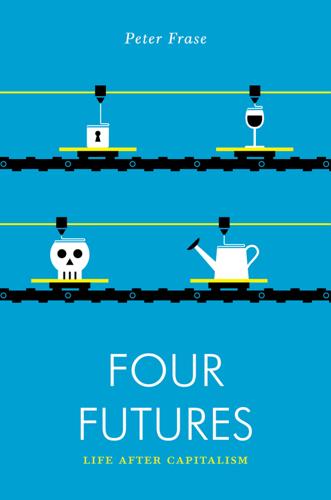
Four Futures: Life After Capitalism
by
Peter Frase
Published 10 Mar 2015
The difference, of course, is that their postscarcity condition is made possible not just by machines but by the labor of the global working class. But an optimistic view of future developments—the future I have described as communism—is that we will eventually come to a state in which we are all, in some sense, the 1 percent. As William Gibson famously remarked, “the future is already here; it’s just unevenly distributed.”1 But what if resources and energy are simply too scarce to allow everyone to enjoy the material standard of living that the rich enjoy today? What if we arrive in a future that no longer requires the mass proletariat’s labor in production but is unable to provide everyone with an arbitrarily high standard of consumption?
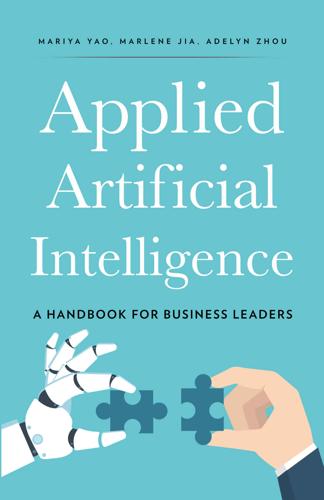
Applied Artificial Intelligence: A Handbook for Business Leaders
by
Mariya Yao
,
Adelyn Zhou
and
Marlene Jia
Published 1 Jun 2018
Cancer, 123(1), 114-121. doi:10.1002/cncr.30245 (27) As validated against a gold standard review conducted on a sample of records by the study’s co-authors, which required 50 to 70 hours. (28) Csail, A. C. (2017, October 16). Using artificial intelligence to improve early breast cancer detection. MIT News. Retrieved from http://news.mit.edu/2017/artificial-intelligence-early-breast-cancer-detection-1017 4. The Challenges of Artificial Intelligence “The future is already here—it’s just not evenly distributed.” —William Gibson When Timnit Gebru attended a prestigious AI research conference in 2016, she counted six black people in the audience out of an estimated 8,500 attendees. There was only one black woman: herself. As a PhD from Stanford University who has published a number of notable papers in the field of artificial intelligence, Gebru finds the lack of diversity in the industry to be extremely alarming.(29) Data and technology are human inventions, ideally designed to reflect and advance human values.
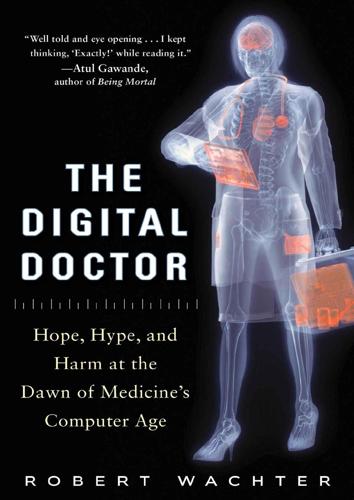
The Digital Doctor: Hope, Hype, and Harm at the Dawn of Medicine’s Computer Age
by
Robert Wachter
Published 7 Apr 2015
The crucial point—and one that leaves me far more optimistic about the future of health IT than I was a few years ago—is that none of these changes, changes that are good for patients, clinicians, and the healthcare system, could have happened by simply implementing an electronic health record. But none of them could have happened without it, either. Part Six Toward a Brighter Future Chapter 27 A Vision for Health Information Technology The future is already here—it’s just not evenly distributed. —William Gibson, writing in the Economist, 2003 In researching this book, I interviewed nearly 100 people from extraordinarily diverse backgrounds—frontline clinicians, world experts in artificial intelligence and big data, aviation engineers and pilots, federal policy makers, CEOs of major IT companies, entrepreneurs, patients and their families.39 Unsurprisingly, they gave vastly differing answers to many of today’s core questions in health information technology: What is the appropriate role of government?
…
Topol, The Creative Destruction of Medicine: How the Digital Revolution Will Create Better Health Care (New York: Basic Books, 2012). 252 In my own division of 60 hospitalists http://hospitalmedicine.ucsf.edu/home/index.html. 253 Today at UCSF, many specialty questions are answered R. Vesely, “Expanding Access to Specialty Care,” University of California, July 30, 2014, available at http://www.university ofcalifornia.edu/news/expanding-access-specialty-care. Chapter 27: A Vision for Health Information Technology 257 “The future is already here” W. Gibson, Talk of the Nation, NPR Radio, November 30, 1999. 260 more like a Wikipedia page than today’s static and siloed notes Several observers have suggested this. For example, see J. Halamka, “Rethinking Clinical Documentation,” Life as a Healthcare CIO blog, April 5, 2010, available at http://geekdoctor.blogspot.com/2010/04/rethinking-clinical-documentation.html; and, by the same author, “Brainstorming About the Future of Clinical Documentation,” December 18, 2012, available at http://geekdoctor.blogspot.com/2012/12/brainstorming-about-future-of-clinical.html. 260 Color-coded digital dashboards An impressive version of this is being developed by Peter Pronovost and colleagues at Johns Hopkins, in collaboration with Michael Gropper and other colleagues at UCSF, funded by the Gordon and Betty Moore Foundation.
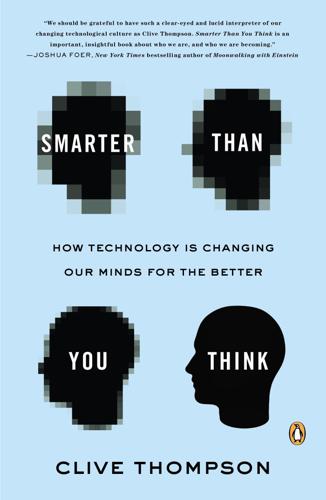
Smarter Than You Think: How Technology Is Changing Our Minds for the Better
by
Clive Thompson
Published 11 Sep 2013
Indeed, these phenomena have already woven themselves so deeply into the lives of people around the globe that it’s difficult to stand back and take account of how much things have changed and why. While this book maps out what I call the future of thought, it’s also frankly rooted in the present, because many parts of our future have already arrived, even if they are only dimly understood. As the sci-fi author William Gibson famously quipped: “The future is already here—it’s just not very evenly distributed.” This is an attempt to understand what’s happening to us right now, the better to see where our augmented thought is headed. Rather than dwell in abstractions, like so many marketers and pundits—not to mention the creators of technology, who are often remarkably poor at predicting how people will use their tools—I focus more on the actual experiences of real people
…
called this the bias of a new tool: Harold Innis, The Bias of Communication, introduction by Alexander John Watson (Toronto: University of Toronto Press, 2008). “tools for thought”: Rheingold introduced the term in his 1985 book of that title, reprinted in 2000: Howard Rheingold, Tools for Thought: The History and Future of Mind-Expanding Technology (Cambridge, MA: MIT Press, 2000). “The future is already here”: Garson O’Toole, “The Future Has Arrived—It’s Just Not Evenly Distributed Yet,” Quote Investigator, January 24, 2012, accessed March 19, 2013, quoteinvestigator.com/2012/01/24/future-has-arrived/. “that horrible mass of books which keeps on growing . . . return to barbarism”: Blair, Too Much to Know, Kindle edition.
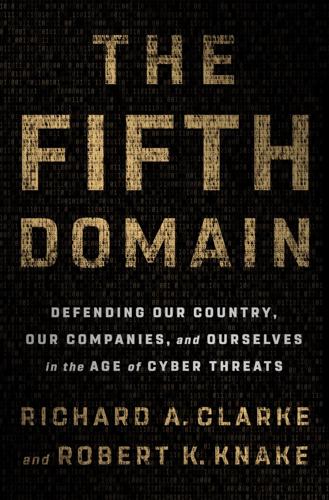
The Fifth Domain: Defending Our Country, Our Companies, and Ourselves in the Age of Cyber Threats
by
Richard A. Clarke
and
Robert K. Knake
Published 15 Jul 2019
A Quantum of Solace for Security 17. 5G and IoT PART VI YOU AND THE WAY AHEAD 18. Derisking Ourselves 19. Everything Done but the Coding Glossary Acknowledgments and Disclosures Notes Index About the Authors PART I THE TWENTY-YEAR WAR Chapter 1 THE BACK OF THE BEAST The future is already here; it’s just not very evenly distributed. —WILLIAM GIBSON Sitting in the back of the Beast, the armored vehicle custom made for the President of the United States, Bill Clinton wanted to talk about his cousin from Hope, Arkansas. He didn’t want to talk about the major speech he was about to give at the National Academy of Sciences.
…
Above all, as we seek solutions in this space, we are looking for rapid evolution, not revolution. We think there are enough companies that have figured out how to manage the threat that the challenge now is to create the right package of incentives to spread these models and to innovate faster than attackers can. As the cyberpunk author William Gibson said, “The future is already here; it’s just not very evenly distributed.” In a sense, therefore, the task at hand is to figure out how to more evenly distribute a secure cyber future. A Different Threat, a Different Model As we looked for solutions to problems that have long plagued cyberspace, what has not changed is our fundamental premise that cybersecurity is a shared responsibility between government and the private sector, with the onus for protecting computer systems falling on the owners and operators of those systems.

Surviving AI: The Promise and Peril of Artificial Intelligence
by
Calum Chace
Published 28 Jul 2015
When she reached her car she checked that the delivery drone had opened her car’s boot successfully and dropped the groceries there before re-locking it with the remote locking code. Happy in the full possession of her vegetables, she drove home, humming along to Joni Mitchell. 2.2 – Converting information into knowledge – at different speeds The science fiction writer William Gibson is reported as saying that “The future is already here – it’s just not evenly distributed.” (13) Most of the things mentioned in the short story above are already available in prototype and early incarnations, and the rest is firmly under development – some of it as part of the so-called “internet of things”. It could take anywhere from five to fifteen years for you to have working versions of all of them.
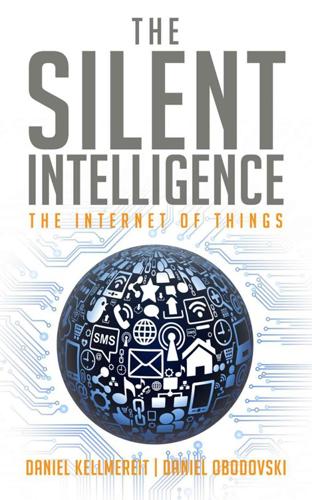
The Silent Intelligence: The Internet of Things
by
Daniel Kellmereit
and
Daniel Obodovski
Published 19 Sep 2013
Perhaps you’ll decide to start a new business, invest in the M2M vertical or industry, launch a new project, or just be as excited about this new growing world as we are. In any case, we wish you happy reading. Daniel Kellmereit and Daniel Obodovski San Francisco, June 2013 Chapter 1 HISTORY AND TRENDS The future is already here — it’s just not evenly distributed. ~ William Gibson How can you tell if something will become so huge and powerful that it’s going to change our lives and the way we do business? Below is a well-known story, popularized by Ray Kurzweil and retold as we know it, that illustrates the power of exponential growth.
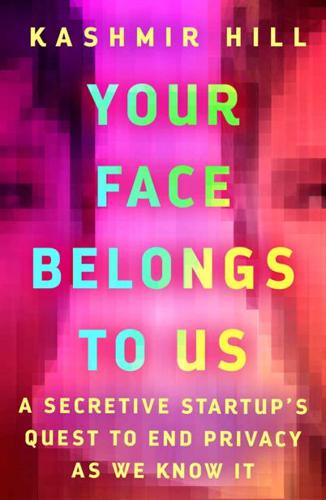
Your Face Belongs to Us: A Secretive Startup's Quest to End Privacy as We Know It
by
Kashmir Hill
Published 19 Sep 2023
Though its existence remained a secret to the public at large, it became a party trick for some of the wealthiest and most powerful people in the world. They used it as a conversation starter on dates, an identification tool for business gatherings, and an advantage at poker tables with strangers. As the science fiction writer William Gibson once observed, “The future is already here—it’s just not very evenly distributed.” In January 2019, Schwartz and Ton-That flew across the country to California to make their pitch to the deep-pocketed investors of Silicon Valley. They met with Sequoia Capital, the firm Ton-That considered the Harvard of the venture capital world.
…
GO TO NOTE REFERENCE IN TEXT “You freaked the hell”: Author’s interview with Hoan Ton-That, 2021. GO TO NOTE REFERENCE IN TEXT “It’s too much”: Ibid. GO TO NOTE REFERENCE IN TEXT at poker tables: Author’s interview with Charles Johnson, 2021. GO TO NOTE REFERENCE IN TEXT “The future is already here”: William Gibson, interviewed on “The Science of Science Fiction,” NPR, November 30, 1999, via The Quote Investigator, January 24, 2012. GO TO NOTE REFERENCE IN TEXT hundreds of searches: Ryan Mac, Caroline Haskins, and Logan McDonald, “Secret Users of Clearview AI’s Facial Recognition Dragnet Included a Former Trump Staffer, a Troll, and Conservative Think Tanks,” BuzzFeed News, March 25, 2020.
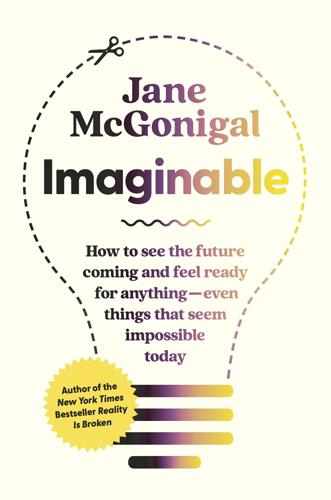
Imaginable: How to See the Future Coming and Feel Ready for Anything―Even Things That Seem Impossible Today
by
Jane McGonigal
Published 22 Mar 2022
It might be a tiny change happening in just one town, or just one school, or just one company, or just one person’s life. But it’s real. It’s not a hypothetical possibility. It is happening right now, and it proves that a specific kind of change is possible. As the science fiction author William Gibson famously stated, “The future is already here. It’s just not evenly distributed.” A signal of change draws your attention to where the ideas, technologies, and habits of the future are being actively experimented with, tested, seeded, and invented, today. You can find signals of change in the news and on social media, in scientific journals and in TEDx talks, in podcast interviews and at protests.
…
Participants can post their thoughts and stories about how the scenario might affect their lives and communities wherever they normally share online—Twitter, Facebook, Instagram, TikTok, YouTube, Medium, Twitch, anywhere!—and include a scenario hashtag, for example, #AlphaGalCrisis. This creates a distributed story, bits of future scattered across the internet in a way that evokes William Gibson’s observation quoted earlier: “The future is already here. It’s just not evenly distributed.” The simulation becomes a kind of scavenger hunt across social media platforms to find fellow future travelers and their stories. A whole alternate universe can be constructed out of small, personal moments imagined and shared by individuals. Social documentation, in any format, allows us to revisit and reflect on our imaginings, so our insights aren’t fleeting and lost.
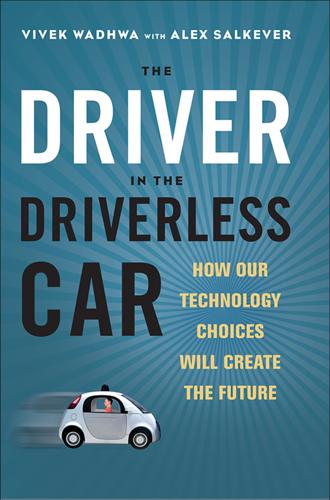
The Driver in the Driverless Car: How Our Technology Choices Will Create the Future
by
Vivek Wadhwa
and
Alex Salkever
Published 2 Apr 2017
What are we yielding to technology? How can we decide whether technological innovation that alters our lives is worth the sacrifice? The noted science-fiction writer William Gibson, a favorite of hackers and techies, said in a 1999 radio interview (though apparently not for the first time): “The future is already here; it’s just not very evenly distributed.”1 Nearly two decades later—though the potential now exists for most of us, including the very poor, to participate in informed decision making as to its distribution and even as to bans on use of certain technologies—Gibson’s observation remains valid.
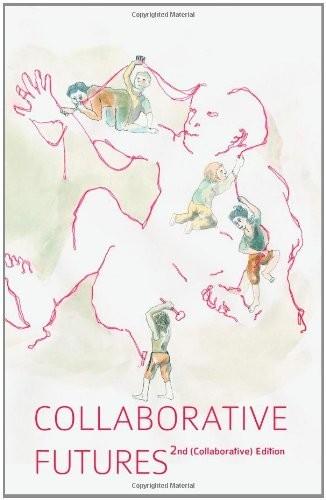
Collaborative Futures
by
Mike Linksvayer
,
Michael Mandiberg
and
Mushon Zer-Aviv
Published 24 Aug 2010
For example, while most social networks only support binary relationships, Slashcode (the so ware that runs Slashdot.org, a pioneer of many features wrongly credited to “Web 2.0”) included a relationship model that defined friends, enemies, enemies-of-friends, etc. The reputation system on the Advogato publishing tool supported a fairly sophisticated trust metric, while most of the more contemporary blog platforms support none. Web 3.0 is also bullshit “The future is already here—it is just unevenly distributed.” —William Gibson One might argue that Web 2.0 has popularized collaborative tools that have earlier been accessible only to a limited group of geeks. It is a valid point to make. Yet the early social platforms like IRC channels, Usenet and e-mail have been protocol based and were not owned by a single proprietor.
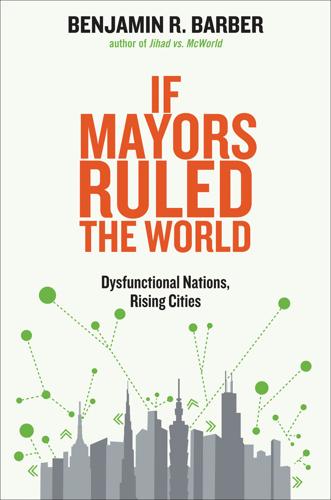
If Mayors Ruled the World: Dysfunctional Nations, Rising Cities
by
Benjamin R. Barber
Published 5 Nov 2013
Sheila Dikshit offers a different and more sustaining version of hope: a promise that urban governance and mayoral leadership can alter the corrupt system and turn cities into genuine arenas of possibility for the poor no less than the wealthy. CHAPTER 9. SMART CITIES IN A VIRTUAL WORLD Linking Cities with Digital Technology For the first time cities have their own voice on the internet world. Artur Serra, Research Director, Citilab in Catalonia (Spain) The future is already here, it’s just not evenly distributed. William Gibson A host of enthusiasts, from the early pioneers of Wired Magazine and the Electronic Frontier Foundation to the newest innovators of City Protocol (the new web-based global cities network in Barcelona), are persuaded that digitally linked, so-called smart cities are on the cutting edge of urban innovation.
…
As such, it offers a useful digital prototype for a parliament of mayors hoping to connect virtually to cities around the world.43 In the United States, the Benton Foundation’s Digital Divide project has mainly played defense, trying to overcome the impact of digital inequality by working to redress the continuing gap that keeps the poor and destitute in both the developed and developing worlds from enjoying whatever civic and economic benefits the web may offer. As sci-fi prophet Bill Gibson has said, the future is already here, it’s just not evenly distributed. The Foundation’s Digital Divide Network and Digital Opportunity Channel continue to press the case for fair distribution, for a more egalitarian and civically accessible-to-all web, but the firms that control the technologies evince little interest in a domain so bereft of profit.
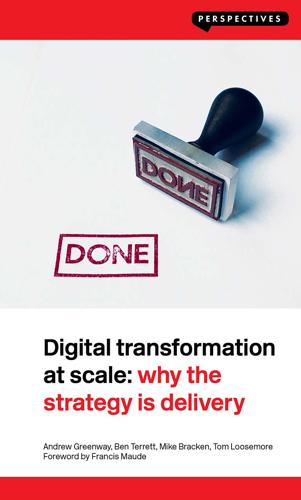
Digital Transformation at Scale: Why the Strategy Is Delivery
by
Andrew Greenway,Ben Terrett,Mike Bracken,Tom Loosemore
Published 18 Jun 2018
Your employees are complaining that it takes their computers 20 minutes to start up in the morning, like an old car in winter. Your competitors seem to be pulling away from you. The burning platform that spurs your workplace into action may not have drawn into clear view just yet, but as the science fiction writer William Gibson said, ‘the future is already here – it’s just not evenly distributed.’ The prize In 2011, the UK set up a small team in the centre of government called the Government Digital Service (GDS), with the responsibility for digitally transforming public services. The UK government was spending at least £16 billion a year on IT.
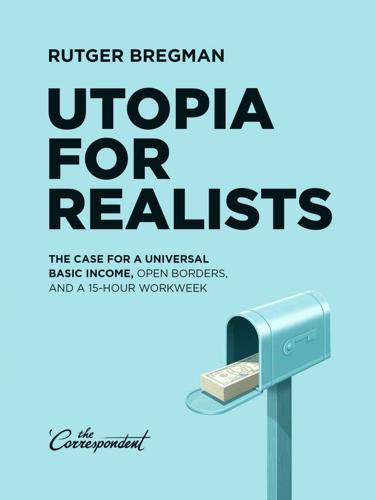
Utopia for Realists: The Case for a Universal Basic Income, Open Borders, and a 15-Hour Workweek
by
Rutger Bregman
Published 13 Sep 2014
Goals for more growth should specify more growth of what and for what.”32 Now it’s up to us to reconsider these old questions. What is growth? What is progress? How do we as a country stack up? Every era needs its own figures. In our Land of Plenty, we have to come up with something new. The future is already here – it’s just not very evenly distributed. WILLIAM GIBSON (b. 1948) 9 Beyond the Gates of the Land of Plenty And then there’s that nagging sense of guilt. Here we are in the Land of Plenty, philosophizing about decadent utopias with free cash and 15-hour workweeks, while hundreds of millions of people still have to survive on a dollar a day.
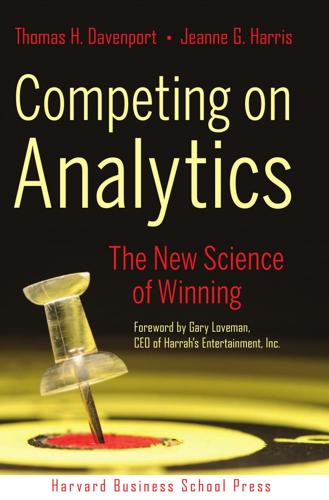
Competing on Analytics: The New Science of Winning
by
Thomas H. Davenport
and
Jeanne G. Harris
Published 6 Mar 2007
In many cases, the analytical competitors we have identified are ahead of their industries in sophistication and progressive practices and are hence bellwethers leading their peers into the future. In this concluding chapter, we speculate broadly on what analytical competitors of the future will be doing differently. As William Gibson once noted, the future is already here but unevenly distributed. We’ve already observed leading companies beginning to adopt the approaches described later in the chapter, and we believe they’ll simply become more common and more refined. Like most prognosticators of the future, we predict more of what we are writing about: more companies choosing to compete on analytics as their distinctive capability, more companies learning from these analytical competitors to become more analytical themselves, and analytical firms employing analytics in more parts of their businesses.
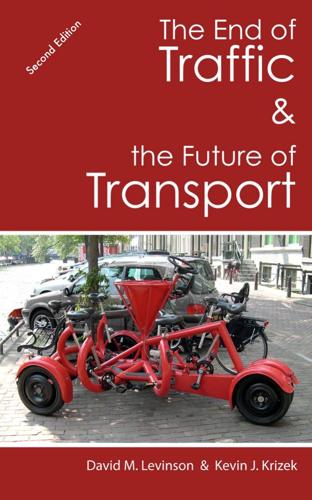
The End of Traffic and the Future of Transport: Second Edition
by
David Levinson
and
Kevin Krizek
Published 17 Aug 2015
The life-span of buildings obviously varies a few years to centuries; commercial structures in the US hover around a half century.113 Property rights inevitably change slower than that, thus it is not unreasonable to think that streets are not going anywhere soon. Yet, there will be opportunities to reconfigure how the roads themselves will be used. Discussion "The future is already here — it is just not very evenly distributed" — William Gibson 114 "In the future, everyone will live and behave like the futurist does today." — The Futurist Fallacy Both Gibson's uneven distribution and our Futurist Fallacy may hold provided that the futurist is not in fact behaving the way future will turn out.

The 80/20 Principle: The Secret of Achieving More With Less
by
Richard Koch
Published 15 Dec 1999
We don’t want to be obsessed with efficiency, but we do want to dispose of the non-life-enhancing activities as easily and swiftly as possible. TAKE RESPONSIBILITY FOR PROGRESS Put away your scepticism and your pessimism. These vices, like their opposites, are self-fulfilling. Recover your faith in progress. Realize that the future is already here: in those few shining examples, in agribusiness, in industry, in services, in education, in artificial intelligence, in medical science, in physics and indeed all the sciences, and even in social and political experiments, where previously unimaginable targets have been surpassed and new targets continue to fall like skittles.

The Economic Singularity: Artificial Intelligence and the Death of Capitalism
by
Calum Chace
Published 17 Jul 2016
It will not be manifest only in the case of truck drivers, but in all areas of the economy, and regions and countries which do resist will find their living standards declining fast. Over time it will prove unsustainable. The science fiction writer William Gibson is reported as saying that “The future is already here – it's just not evenly distributed.[ccxii]” In the Yandicoogina and Nammuldi mines in Pilbara, Western Australia, transport operations are now entirely automated, supervised from a centre in Perth, which is 1,200 miles away.[ccxiii] Mining giant Rio Tinto was prompted to take this initiative by economics: the decade-long mining boom caused by China's enormous appetite for raw materials.

Time Travel: A History
by
James Gleick
Published 26 Sep 2016
Andrew Grove, chief executive of Intel, 1996: “We are now living on internet time.” Often this was just a cool-kids way of saying “faster,” but our relationship to time was changing yet again, even if no one quite understood what or how. On internet time the past bleeds into the present. And the future? There seems to be a feeling that the future is already here. Blink and it has happened. Thus the future vanishes. “Increasingly, our concepts of past, present and future are being forced to revise themselves,” wrote J. G. Ballard in 1995—science fiction, as ever, the canary in the coal mine. “The future is ceasing to exist, devoured by the all-voracious present.
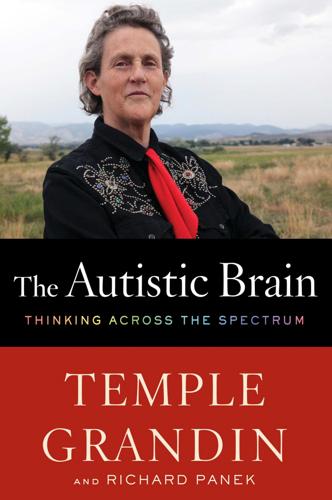
The Autistic Brain: Thinking Across the Spectrum
by
Temple Grandin
and
Richard Panek
Published 15 Feb 2013
Why were those same circuits stronger at six months than those of the children who were developing typically? Were they even stronger even earlier? The researchers don’t have an answer, but they do have a new goal: three-month-olds. Another goal for further research is to look at the brain in even finer detail. Fortunately, the future is already here. I know, because I’ve seen it. Actually, I’ve been inside the future—a radically new version of DTI called high-definition fiber tracking. HDFT was developed at the Learning Research and Development Center at the University of Pittsburgh. Walter Schneider, senior scientist at the center, explains that HDFT was underwritten by the Department of Defense to investigate traumatic brain injuries: “They came to me saying, we need something that can do for brain injury what X-rays do for orthopedic injury.”
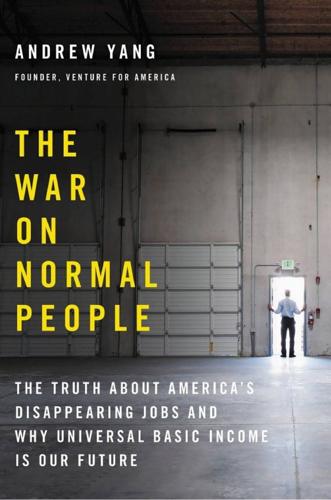
The War on Normal People: The Truth About America's Disappearing Jobs and Why Universal Basic Income Is Our Future
by
Andrew Yang
Published 2 Apr 2018
We’ve been able to get away with this pretense for a few decades by loading up on debt and cheap money and putting off future obligations. That has run its course just as technology is really set to take off and render more of our labor obsolete, particularly for normal Americans. You might be wondering at my choice of terminology in “normal Americans”—we’ll explore that next. THREE WHO IS NORMAL IN AMERICA The future is already here—it’s just unevenly distributed. —WILLIAM GIBSON Some of my friends didn’t like the title of this book when I shared it with them. The word “normal” has become freighted, meant to signify a certain perspective or way of life. When I say “normal,” I mean the average. As in, if you lined up Americans by some quality or trait or classification—education, income, savings, proximity to living in a city, and so on—the person in the middle would be normal.
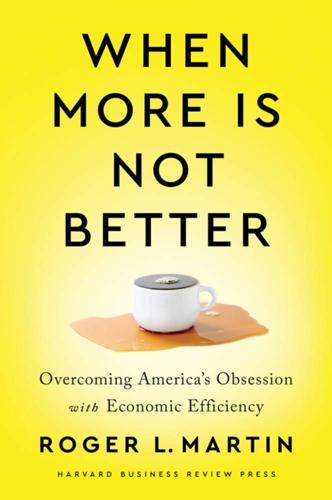
When More Is Not Better: Overcoming America's Obsession With Economic Efficiency
by
Roger L. Martin
Published 28 Sep 2020
Second, I restrict my suggested solutions to prescriptions that are already in place. They may come from a different context or jurisdiction. But they are not theoretical; they are actual. They aren’t speculative; they are demonstrably doable—because they have been done! I believe in the adage of science-fiction writer William Gibson: “The future is already here—it is just not evenly distributed.” The task is to get solutions that are already out there and that are working, to make them more evenly distributed. And that, essentially, is the call to arms of my conclusion in chapter 10. Let me finish on a personal note. This book is not inspired by any sudden revelation.

Protocol: how control exists after decentralization
by
Alexander R. Galloway
Published 1 Apr 2004
Periodization theory is a loose art at best and must take into account that, when history changes, it changes slowly and in an overlapping, multilayered way, such that one historical moment may extend well into another, or two moments may happily coexist for decades or longer. For instance, in much of the last hundred years, all three social phases described earlier existed at the same time in the United States and elsewhere. To paraphrase William Gibson: The future is already here, but it is not uniformly distributed across all points in society. At best, periodization theory is an analytical mindgame, yet one that breathes life into the structural analyses offered to explain certain tectonic shifts in the foundations of social and political life. My book implicitly participates in this game, mapping out certain details of the third, “control society” phase, specifically the diagram of the distributed network, the technology of the computer, and the management style of protocol. 50.

Before Babylon, Beyond Bitcoin: From Money That We Understand to Money That Understands Us (Perspectives)
by
David Birch
Published 14 Jun 2017
The mobile phone didn’t just change the payphone business, it changed the communications paradigm: the common mental model that we share as the basis for thinking about communications. Uneven The Canadian novelist William Gibson – author of the wonderful Neuromancer (the seminal work of fiction for the new economy) and the man who coined the term ‘cyberspace’ – famously observed that ‘the future is already here, it’s just unevenly distributed’. He means that the technologies that will shape society in our lifetimes already exist, it’s just that we might not have noticed them yet. One of the key elements missing from that 1988 vision of 2013 was the mobile phone, despite it having existed for a decade.

White City, Black City: Architecture and War in Tel Aviv and Jaffa
by
Sharon Rotbard
Published 1 Jan 2005
And these politics are no less wilful than Herzl’s legend, and not more legendary than Ben-Gurion’s stories. Among many of the inhabitants of the ‘Black City’, multiculturalism is seen as the key, defining component of the civilian, urban, and neighbourhood ethos. A visit to any public park in the southern neighbourhoods proves that the future is already here: the children that play together in Levinsky Park are made up of an eclectic mix of secular Jews, religious Jews, Palestinians, Russians, Ethiopians, Chinese, Eritreans, Colombians, Darfuris and Filipinos. They all speak the same Hebrew they learnt in kindergarten and at elementary school.

Strategy Strikes Back: How Star Wars Explains Modern Military Conflict
by
Max Brooks
,
John Amble
,
M. L. Cavanaugh
and
Jaym Gates
Published 14 May 2018
With endless permutations, the world at war is difficult to predict. So what can this book, as a whole, tell us about future conflict? Not as much as we’d like but more than we need. We’ll always wish we knew more about a war to come. But if you look closely, there’s enough to go on. Consider the statement often attributed to author William Gibson: “The future is already here. It’s just not evenly distributed yet.”6 Many of this book’s concepts will impact different warfighting groups differently. Today, there are three general categories in the practice of war. There’s the top shelf, with the greatest resources and the most destructive power: the United States, Russia, and China.

Brave New Work: Are You Ready to Reinvent Your Organization?
by
Aaron Dignan
Published 1 Feb 2019
Criticality is fractal—tipping points can occur at any scale. A person can tip a team, a team can tip a division, and a division can tip a global corporation. As the saying goes, there are decades where nothing happens, and there are weeks where decades happen. Epilogue WHAT DREAMS MAY COME The future is already here—it’s just not evenly distributed. —William Gibson Deep down, I think we all have a pretty good idea of what will happen if we don’t change how we work. We’re watching it unfold in slow motion right now. Massive bureaucracies lacking conscience or purpose. Startups meant to disrupt the status quo unintentionally entrenching it.
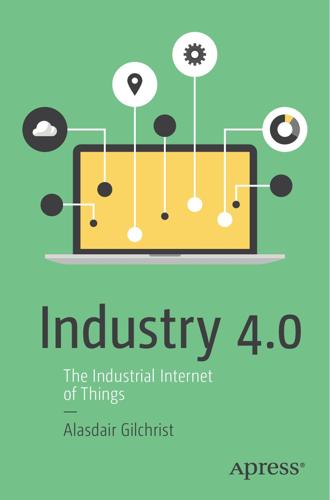
Industry 4.0: The Industrial Internet of Things
by
Alasdair Gilchrist
Published 27 Jun 2016
The goal is to manage the entire value chain process, by improving efficiencies in the production process and coming up with products and services that are of superior quality. This vision follows the maxim of higher quality, not at the expense of lower price. This philosophy has produced the smart factory of the future, where efficiencies and costs improved and profits increased. This factory of the future is already here—as we will see later—to be one that operates with quiet efficiency, where all processes, driven by CPS and humans alike, are unlike any traditional factories, as they perform in almost sterile environments, cleanly, safely, reliably, and efficiently. Why Industry 4.0 and Why Now? The rise of the machine, heralded back in the 70s and 80s as the future of manufacturing and the solution to erratic humans on the production line, caused great worry.
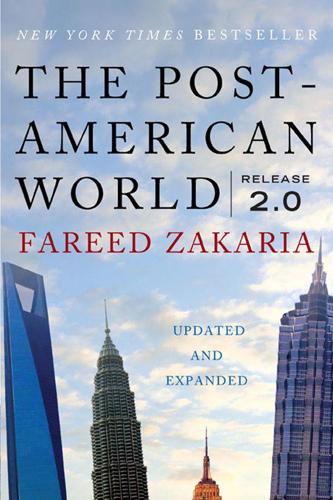
The Post-American World: Release 2.0
by
Fareed Zakaria
Published 1 Jan 2008
America will remain a vital, vibrant economy, at the forefront of the next revolutions in science, technology, and industry—as long as it can embrace and adjust to the challenges confronting it. The Future Is Here When trying to explain how America will fare in the new world, I sometimes say, “Look around.” The future is already here. Over the last twenty years, globalization has been gaining breadth and depth. More countries are making goods, communications technology has been leveling the playing field, capital has been free to move across the world. And America has benefited massively from these trends. Its economy has received hundreds of billions of dollars in investment—a rarity for a country with much capital of its own.

Possible Minds: Twenty-Five Ways of Looking at AI
by
John Brockman
Published 19 Feb 2019
If we feel that the judge of transhumanism should not be fully paleo-culture humans but recent humans, then how would we ever reach transhuman status? We “recent humans” may always be capable of comprehending each new technological increment—never adequately surprised to declare arrival at a (moving) transhuman target. The science-fiction prophet William Gibson said, “The future is already here—it’s just not very evenly distributed.” While this underestimates the next round of “future,” certainly millions of us are transhuman already—with most of us asking for more. The question “What was a human?” has already transmogrified into “What were the many kinds of transhumans? . . .

Green Swans: The Coming Boom in Regenerative Capitalism
by
John Elkington
Published 6 Apr 2020
Some will argue that our suggested solutions are literal impossibilities, but we see them not just as possible but, often, as inevitable. Indeed, we assume that something that already exists is unlikely to be impossible. As my favorite living science fiction author William Gibson famously put it, “The future is already here—it’s just not evenly distributed.” Yet. But, while exciting and necessary, early experiments in breakthrough wealth creation are far from guaranteed to evolve at the necessary pace and scale. To do so, they require active, intelligent, and sustained government, public, and—crucially—investor engagement.

Heart of the Machine: Our Future in a World of Artificial Emotional Intelligence
by
Richard Yonck
Published 7 Mar 2017
Nevertheless, barring a huge transformation in how economics works, the bleeding and leading edges of technological progress will initially be available to those with wealth. Only over time will new advances become abundant and widely available. As renowned author William Gibson famously said, “The future is already here. It’s just not evenly distributed.” Former corporate futurist for Dow Chemical and now University of Houston’s Foresight Program professor, Andy Hines has seen the field of futures from all sides.8 Perhaps for this reason, he turned to the next generation of futurists for his response: In thinking about emotional machines, as is so often the case for me, the most interesting ideas come from my students.
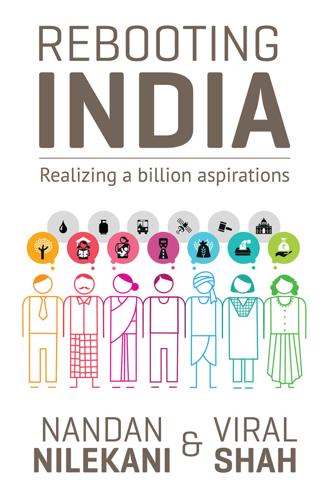
Rebooting India: Realizing a Billion Aspirations
by
Nandan Nilekani
Published 4 Feb 2016
If we are to redress this wrong, we must design new institutions to strengthen our judiciary and infuse it with new talent that can promote more efficient and transparent functioning. Only then can we fulfil the Aristotelian definition of a stable state—one in which ‘all men are equal before the law’. 16 Rebooting India: Realizing a Billion Aspirations The future is already here—it’s just not evenly distributed. —William Gibson India’s twelve grand challenges THROUGH THE COURSE of this book, we have discussed twelve grand challenges—and the platforms to address them—that directly affect citizens, businesses and the government. In the new innovation economy, the government has to think in terms of building platforms and ecosystems, developing minimal and simple solutions that can scale up, and providing a reasonable regulatory regime.

The Coming of Neo-Feudalism: A Warning to the Global Middle Class
by
Joel Kotkin
Published 11 May 2020
CMP=share_btn_tw; “The Guardian view on surveillance in China: Big Brother is watching,” Editorial, Guardian, December 28, 2017, https://www.theguardian.com/commentisfree/2017/dec/28/the-guardian-view-on-surveillance-in-china-big-brother-is-watching; Megha Rajagopalan, “This Is What a 21st-Century Police State Really Looks Like,” Buzzfeed, October 17, 2017, https://www.buzzfeednews.com/article/meghara/the-police-state-of-the-future-is-already-here#.kaqZrDywkR; Chris Buckley et al., “How China Turned a City Into a Prison,” New York Times, April 4, 2019, https://www.nytimes.com/interactive/2019/04/04/world/asia/xinjiang-china-surveillance-prison.html; Benjamin Haas, “Chinese authorities collecting DNA from all residents of Xinjiang,” Guardian, December 13, 2017, https://www.theguardian.com/world/2017/dec/13/chinese-authorities-collecting-dna-residents-xinjiang; Tom Phillips, “China orders GPS tracking of every car in troubled region,” Guardian, February 21, 2017, https://www.theguardian.com/world/2017/feb/21/china-orders-gps-tracking-of-every-car-in-troubled-region. 28 Josh Chin and Liza Lin, “China’s All-Seeing Surveillance State Is Reading Its Citizens’ Faces,” Wall Street Journal, June 26, 2017, https://www.wsj.com/articles/the-all-seeing-surveillance-state-feared-in-the-west-is-a-reality-in-china-1498493020; “Next-Level Surveillance: China Embraces Facial Recognition,” Wall Street Journal, June 26, 2017, https://www.wsj.com/video/next-level-surveillance-china-embraces-facial-recognition/9ED95BFA-76EF-48DA-A56B-50126AFDDA1C.html. 29 Stephen Chan, “‘Forget the Facebook leak’: China is mining data directly from workers’ brains on an industrial scale,” South China Morning Post, May 2, 2018, http://www.scmp.com/news/china/society/article/2143899/forget-facebook-leak-china-mining-data-directly-workers-brains. 30 Richard Florida, “When Urbanization Doesn’t Help,” City Lab, June 22, 2016, https://www.citylab.com/equity/2016/06/disparities-of-urbanization-global-china-india/487625/. 31 Daniel Lyon, “Surveillance, Power, and Everyday Life,” Oxford Handbook of Information and Communication Technologies, https://panoptykon.org/sites/default/files/FeedsEnclosure-oxford_handbook_3.pdf. 32 David Byrne, “Eliminating the Human,” Technology Review, August 15, 2017, https://www.technologyreview.com/s/608580/eliminating-the-human/. 33 Peter Swire, “Should the Leading Online Tech Companies Be Regulated as Public Utilities?”
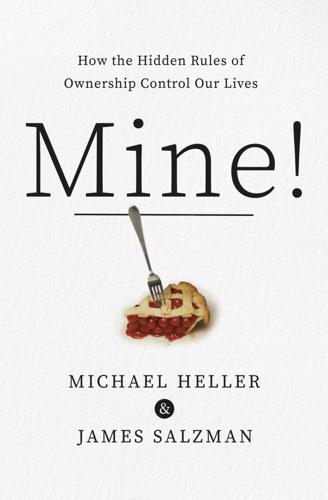
Mine!: How the Hidden Rules of Ownership Control Our Lives
by
Michael A. Heller
and
James Salzman
Published 2 Mar 2021
pistol offense: By creating the pistol (a shotgun offense, but with a running back lined up behind the quarterback), Coach Chris Ault was able to take his Nevada team to the top of its conference. Other college teams copied the offense, which was so successful that it soon jumped to the National Football League. See Chris Brown, “The Future Is Already Here: How the Pistol Offense Is Changing the NFL,” SB Nation, December 27, 2012. “All comedians steal”: Tony Alpsen, “10 Comedians Who Borrowed Jokes Without Making Headlines,” Vulture, February 14, 2017. “Men-Steal-ia”: Colin Patrick, “A Not-So-Funny Look at 6 Comedians Accused of Plagiarism,” Mental Floss, January 21, 2016.

The Inevitable: Understanding the 12 Technological Forces That Will Shape Our Future
by
Kevin Kelly
Published 6 Jun 2016
The views were coarse, the vision often stuttered, but the intended effect was inarguable: You went somewhere else. The next morning William Gibson, an up-and-coming science fiction writer who stayed up the night testing cyberspace for the first time, was asked what he thought about these new portals to synthetic worlds. He then first uttered his now famous remark: “The future is already here; it’s just not evenly distributed.” VR was so uneven, however, it faded. The next steps never happened. All of us, myself included, thought VR technology would be ubiquitous in five years or so—at least by the year 2000. But no advances happened till 2015, 25 years after Jaron Lanier’s pioneering work.

Augmented: Life in the Smart Lane
by
Brett King
Published 5 May 2016
Augmented is about how your life will change on a day-to-day basis as data, sensors, machine intelligence and automation enhance our world, and our place in it. It’s about how you will adapt to live in a smart world. I hope it will inspire you and supercharge your imagination. Before we get started in earnest on this journey, I’ll leave you with a quote from one of the greatest science fiction authors of our time, William Gibson. The future is already here—it’s just not evenly distributed. William Gibson, Economist, 4th December 2003 Thanks for taking this journey, but then again… do you really have a choice? BK Chapter 1 The History of Technology Disruption “Every generation likes to think it is improving on the last, that progress is inevitable… But the truth is,… History has a way of repeating itself.
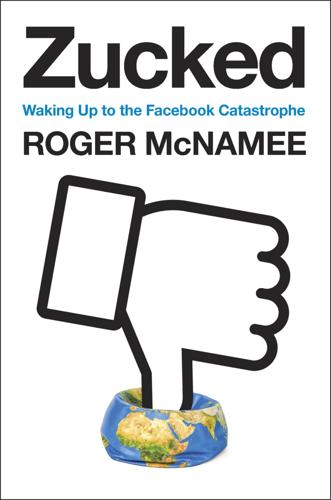
Zucked: Waking Up to the Facebook Catastrophe
by
Roger McNamee
Published 1 Jan 2019
Shareholders and third-party developers favor the status quo, so they are unlikely to be the drivers of change. Only a very public, concerted effort by top management will change the behavior of these companies, and that will only happen if policy makers and users insist on it. 14 The Future of You The future is already here—it’s just not evenly distributed. —WILLIAM GIBSON A dystopian technology future overran our lives before we were ready. As a result, we now face issues for which there are no easy answers without much time to act. We embraced the smartphone as a body part without understanding that there would be a downside.

Boom: Bubbles and the End of Stagnation
by
Byrne Hobart
and
Tobias Huber
Published 29 Oct 2024
Or, in the unsettling words of philosopher Nick Land, “the effect of singularity—the causal origin—is futural and not historical.” 348 The unorthodox idea that hyperstitions of the future such as the technological singularity, messianic resurrection, or the advent of hyperbitcoinization might causally affect the present gives new meaning to the famous (and possibly apocryphal) statement of cyberpunk writer William Gibson: “The future is already here—it’s just not very evenly distributed.” The collapse of the present and the future that occurs in a bubble might also explain the messianic zeal of many bubble believers—they’re driven by a prophetic vision of the future that they want to help realize technologically. 349 Echoing Hebrew 11:1, they have a “conviction of things not seen.”

Super Thinking: The Big Book of Mental Models
by
Gabriel Weinberg
and
Lauren McCann
Published 17 Jun 2019
As a result, they assembled a world-class team with much less money than their competition. Now most professional sports teams employ a squad of statisticians to look for such anomalies. As Thiel says, many secrets are similarly hidden in plain sight. You just need to know where to look. Science fiction writer William Gibson put it like this: “The future is already here—it’s just not very evenly distributed.” By studying future-facing pockets of people and knowledge across different fields, you can get closer to secrets. Technologies that people use every day started their growth among small groups of innovators many years before they became commonplace.
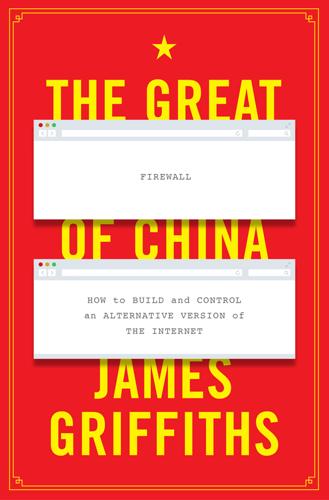
The Great Firewall of China
by
James Griffiths;
Published 15 Jan 2018
Osborne, ‘Isis threatens China and vows to “shed blood like rivers”’, The Independent, 1 March 2017, https://www.independent.co.uk/news/world/middle-east/isis-china-threaten-terror-attack-muslim-islamist-group-islamic-state-a7606211.html 5‘China “expels” French journalist over Uighur article’, BBC News, 26 December 2015, http://www.bbc.com/news/world-asia-china-35181299 6J. Jacobs, Xinjiang and the Modern Chinese State, Seattle WA: University of Washington Press, 2016, p. 3. 7M. Rajagopalan, ‘This is what a 21st-century police state really looks like’, BuzzFeed, 17 October 2017, https://www.buzzfeed.com/meghara/the-police-state-of-the-future-is-already-here?utm_term=.jiJKNDzG2#.mnPM42wem 8T. Phillips, ‘China testing facial-recognition surveillance system in Xinjiang – report, The Guardian, 18 January 2018, https://www.theguardian.com/world/2018/jan/18/china-testing-facial-recognition-surveillance-system-in-xinjiang-report 9S. Pham, ‘Chinese AI startup dwarfs global rivals with $4.5 billion valuation’, CNNMoney, 9 April 2018, http://money.cnn.com/2018/04/09/technology/china-ai-sensetime-startup/index.html 10C.
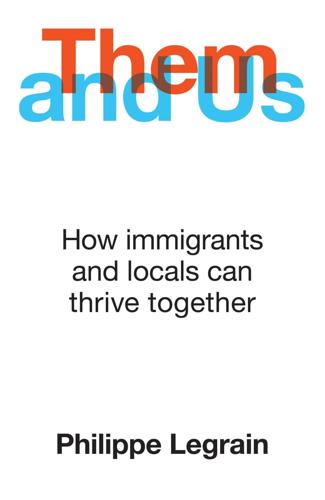
Them and Us: How Immigrants and Locals Can Thrive Together
by
Philippe Legrain
Published 14 Oct 2020
Those who favour open, liberal and progressive societies that offer opportunities to people of all backgrounds, wherever they were born, also need to engage with those who have different ideas of a good society. Those who value order more than freedom, national identity more than individuality and global citizenship, and traditional communities rather than chosen ones need reassurance that the future has space for them too. And it does. The future is already here, if you look for it. People who prefer to live surrounded by people of the same race or ethnicity can choose to do so. Diverse cities can coexist with mono-ethnic commuter towns, suburbs and countryside. Mixing would be preferable, in my view, but it isn’t mandatory. People who hate London don’t have to live there.

City: A Guidebook for the Urban Age
by
P. D. Smith
Published 19 Jun 2012
Or perhaps it is because, as Margaret Mead has said, Hell is always more convincing than Heaven.48 But in the future, cities will almost certainly develop at an uneven rate, just as they do today, with poverty and outmoded infrastructure existing alongside wealth and cutting-edge technology. As William Gibson – whose Neuromancer (1984) echoes Blade Runner’s future noir atmosphere – has said: ‘The future is already here. It is just not evenly distributed.’49 With its polluted, smoggy air and permanently rain-swept streets, Blade Runner also reminds us that whatever cities we build in the future we will have to live with the reality of climate change. Nobody yet knows how serious that will be and how our cities will have to change.
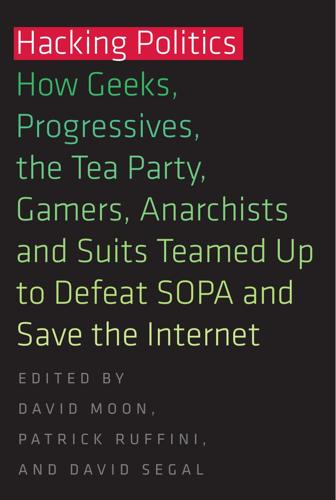
Hacking Politics: How Geeks, Progressives, the Tea Party, Gamers, Anarchists and Suits Teamed Up to Defeat SOPA and Save the Internet
by
David Moon
,
Patrick Ruffini
,
David Segal
,
Aaron Swartz
,
Lawrence Lessig
,
Cory Doctorow
,
Zoe Lofgren
,
Jamie Laurie
,
Ron Paul
,
Mike Masnick
,
Kim Dotcom
,
Tiffiniy Cheng
,
Alexis Ohanian
,
Nicole Powers
and
Josh Levy
Published 30 Apr 2013
Perhaps the high engagement of young, net-savvy individuals is only available for the politics of technology; perhaps copyright alone is sufficiently orthogonal to traditional party lines to traverse the left-right divide; perhaps Go Daddy is too easy a target for low-cost boycotts; perhaps all this will be easy to copy in the next cyber-astroturf campaign. Perhaps. But perhaps SOPA/PIPA follows William Gibson’s “the future is already here, it’s just not very evenly distributed.” Perhaps, just as was the case with free software that preceded widespread adoption of peer production, the geeks are five years ahead of a curve that everyone else will follow. If so, then SOPA/PIPA provides us with a richly detailed window into a more decentralized democratic future, where citizens can come together to overcome some of the best-funded, best-connected lobbies in Washington D.C.

AI 2041: Ten Visions for Our Future
by
Kai-Fu Lee
and
Qiufan Chen
Published 13 Sep 2021
In the United States, there are more than five times as many unoccupied houses as there are homeless people. So we already have theoretical plenitude in 2021 for food and shelter in the United States. Imagine trying to explain this accomplishment and imbalance to humans of five hundred years ago. As William Gibson said, “The future is already here—it is just not very evenly distributed.” ECONOMIC MODELS FOR SCARCITY AND POST-SCARCITY For millennia, human economic systems have evolved under one fundamental premise—scarcity. Scarcity exists when human wants for goods and services exceed the limited supply for them. Scarcity has been the cause of wars, mass migration, capital markets, and every aspect of how civilization has developed.
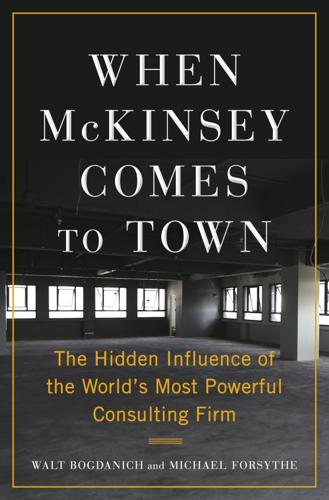
When McKinsey Comes to Town: The Hidden Influence of the World's Most Powerful Consulting Firm
by
Walt Bogdanich
and
Michael Forsythe
Published 3 Oct 2022
GO TO NOTE REFERENCE IN TEXT “As a firm, we take seriously”: McKinsey Code of Conduct, www.mckinsey.com. GO TO NOTE REFERENCE IN TEXT Those McKinsey reports don’t downplay the crisis: “GHG Emissions and Climate Change,” McKinsey discussion document, March 2019. GO TO NOTE REFERENCE IN TEXT “You are the caretaker”: Pilita Clark, “The Job Interview of the Future Is Already Here,” Financial Times, Dec. 15, 2018. GO TO NOTE REFERENCE IN TEXT Pinner and his colleagues argued: “Climate Math: What a 1.5-Degree Pathway Would Take,” McKinsey Quarterly, April 30, 2020. GO TO NOTE REFERENCE IN TEXT “Our challenge to our clients”: Naina Dhingra, Robin Nutall, and Matt Stone, “Embedding Purpose: Fewer Slogans, More Action,” post on McKinsey’s Strategy & Corporate Finance blog, Aug. 28, 2019.

Physics of the Future: How Science Will Shape Human Destiny and Our Daily Lives by the Year 2100
by
Michio Kaku
Published 15 Mar 2011
This book is not a work of fiction, a by-product of the overheated imagination of a Hollywood scriptwriter, but rather is based on the solid science being conducted in major laboratories around the world today. The prototypes of all these technologies already exist. As William Gibson, the author of Neuromancer who coined the word cyberspace, once said, “The future is already here. It’s just unevenly distributed.” Predicting the world of 2100 is a daunting task, since we are in an era of profound scientific upheaval, in which the pace of discovery is always accelerating. More scientific knowledge has been accumulated just in the last few decades than in all human history.
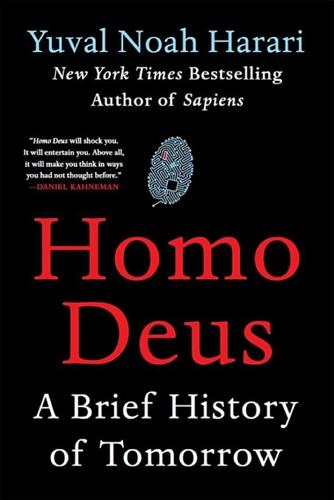
Homo Deus: A Brief History of Tomorrow
by
Yuval Noah Harari
Published 1 Mar 2015
Indeed, it might prove easier to replace doctors specialising in a relatively narrow field such as cancer diagnosis. For example, in a recent experiment a computer algorithm diagnosed correctly 90 per cent of lung cancer cases presented to it, while human doctors had a success rate of only 50 per cent.8 In fact, the future is already here. CT scans and mammography tests are routinely checked by specialised algorithms, which provide doctors with a second opinion, and sometimes detect tumours that the doctors missed.9 A host of tough technical problems still prevent Watson and its ilk from replacing most doctors tomorrow morning.

WTF?: What's the Future and Why It's Up to Us
by
Tim O'Reilly
Published 9 Oct 2017
No one even remembers that the event was originally called the Freeware Summit. It was thereafter referred to as “The Open Source Summit.” This is a key lesson in how to see the future: bring people together who are already living in it. Science fiction writer William Gibson famously observed, “The future is already here. It’s just not evenly distributed yet.” The early developers of Linux and the Internet were already living in a future that was on its way to the wider world. Bringing them together was the first step in redrawing the map. ARE YOU LOOKING AT THE MAP OR THE ROAD? There’s another lesson here too: Train yourself to recognize when you are looking at the map instead of at the road.
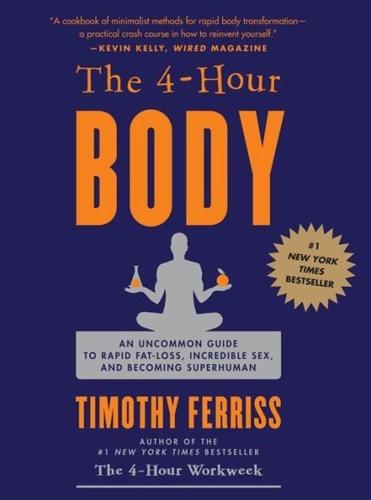
The 4-Hour Body: An Uncommon Guide to Rapid Fat-Loss, Incredible Sex, and Becoming Superhuman
by
Timothy Ferriss
Published 1 Dec 2010
Now the good news: with a little help, it’s never been easier to collect a few data points (at little cost), track them (without training), and make small changes that produce incredible results. Type 2 diabetics going off of medication 48 hours after starting a dietary intervention? Wheelchair-bound seniors walking again after 14 weeks of training? This is not science fiction. It’s being done today. As William Gibson, who coined the term “cyberspace,” has said: “The future is already here—it is just unevenly distributed.” The 80/20 Principle: From Wall Street to the Human Machine This book is designed to give you the most important 2.5% of the tools you need for body recomposition and increased performance. Some short history can explain this odd 2.5%. Vilfredo Pareto was a controversial economist-cum-sociologist who lived from 1848 to 1923.
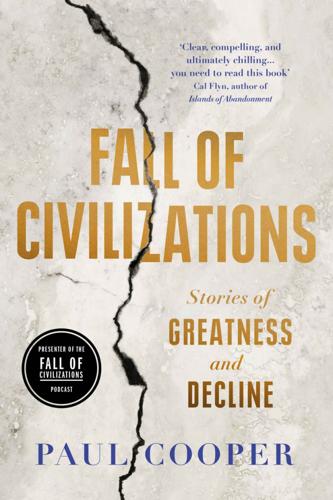
Fall of Civilizations: Stories of Greatness and Decline
by
Paul Cooper
Published 31 Mar 2024
The IEP estimates that ‘1.2 billion people could be displaced globally by 2050’.15 The Fragile States Index 2023 listed 56 countries in their ‘high warning’ category or higher, and climate pressure has been implicated in recent conflicts in Syria, Mali and Libya, among others. To put a dark spin on William Gibson’s famous quote: ‘The future is already here — it’s just not very evenly distributed.’16 Like the people of the Bronze Age, or the Maya city states, the interconnected nature of our global economy means that a crisis in one part of the world is soon felt everywhere. We in the West produce our textiles in Bangladesh, our semiconductors in Taiwan, our phones and computers in China.
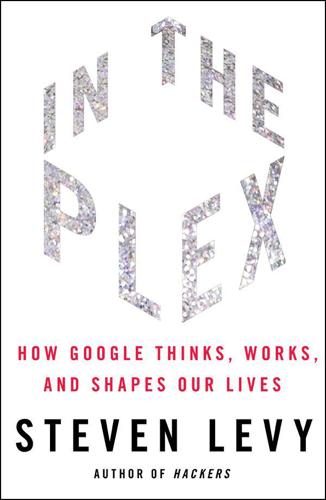
In the Plex: How Google Thinks, Works, and Shapes Our Lives
by
Steven Levy
Published 12 Apr 2011
Understanding those groundbreaking products helps us understand Google and its employees because their operation embodies both the company’s values and its technological philosophy. More important, understanding them helps us understand our own world—and tomorrow’s. The science fiction writer William Gibson once said that the future is already here—just not evenly distributed. At Google, the future is already under way. To understand this pioneering company and its people is to grasp our technological destiny. And so here is Google: how it works, what it thinks, why it’s changing, how it will continue to change us. And how it hopes to maintain its soul.
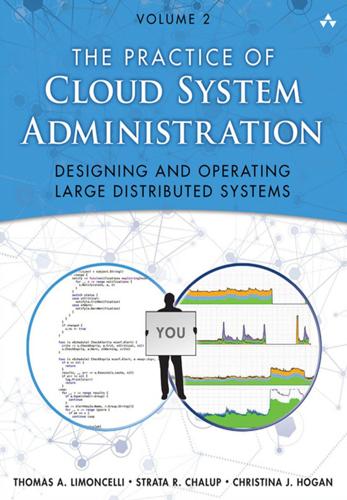
The Practice of Cloud System Administration: DevOps and SRE Practices for Web Services, Volume 2
by
Thomas A. Limoncelli
,
Strata R. Chalup
and
Christina J. Hogan
Published 27 Aug 2014
They know and use the best practices of our industry. Some even invent new ones. The next 25 to 30 percent know that the best practices exist but are struggling to adopt them. The remaining super-majority do not even know these best practices exist. Science fiction writer William Gibson famously said, “The future is already here—it’s just not very evenly distributed.” Likewise, the knowledge of how to be a great system administration team is here—it’s just not very evenly distributed. 20.2 How to Measure Greatness Measuring the quality of an operations team is extremely difficult. Other aspects of operations are easy to measure.

Valley of Genius: The Uncensored History of Silicon Valley (As Told by the Hackers, Founders, and Freaks Who Made It Boom)
by
Adam Fisher
Published 9 Jul 2018
Marc Benioff: And here his last message to us was: “Look inside yourself, realize yourself, look to The Autobiography of a Yogi, which is a story of self-realization.” I think that is so powerful. It gives a tremendous insight into who he was but also why he was successful. He was not afraid to take that key journey. Ron Johnson: Steve was clearly a spiritual being. Marc Benioff: He was the guru. EPILOGUE The future is already here—it’s just not very evenly distributed. —WILLIAM GIBSON The Endless Frontier The future history of Silicon Valley They come West seeking fame and fortune. They work their claims. Some even strike it rich. Swap the pickax for some coding chops and the six-shooter for a standing desk, and suddenly Silicon Valley becomes a much more familiar place.

Future Crimes: Everything Is Connected, Everyone Is Vulnerable and What We Can Do About It
by
Marc Goodman
Published 24 Feb 2015
Yet for as ubiquitous as technology seems in our lives today, the exponential rate of growth means that just over the horizon is a tidal wave of technological advances that will leave our heads spinning. Not only will the breadth and depth of our connection to the global information grid vastly expand, but new technologies heretofore relegated to the realm of science fiction will soon emerge as science fact. In short, we ain’t seen nothing yet. CHAPTER 3 Moore’s Outlaws The future is already here. It’s just not evenly distributed yet. WILLIAM GIBSON, NEUROMANCER To learn the mathematical power of exponents and exponential curves, schoolchildren in France were asked to imagine a pond with a small water lily leaf growing on it. The leaf, they were told, would double in size every day and would take thirty days to cover the entire pond.

Tools of Titans: The Tactics, Routines, and Habits of Billionaires, Icons, and World-Class Performers
by
Timothy Ferriss
Published 6 Dec 2016
Keep your genetic data very close to your chest. Even if you use pseudonyms, I’ve seen companies that can produce facial features from DNA info. It’s going to be practically impossible to anonymize. ✸ Do you have any quotes that you live your life by or think of often? [Among others] “The future is already here—it’s just unevenly distributed.”—William Gibson “If we continue to develop our technology without wisdom or prudence, our servant may prove to be our executioner.”—Omar N. Bradley ✸ What is the worst advice you see or hear given in your trade or area of expertise? “If you have nothing to hide, then you don’t have to worry about privacy, and that we must sacrifice our privacy in order to have security

MONEY Master the Game: 7 Simple Steps to Financial Freedom
by
Tony Robbins
Published 18 Nov 2014
But if you’re a person who is truly interested in knowing how technology is shaping our lives, I think this will help you understand what’s available and what’s coming. The way I look at it, you can choose to be fearful about the future, or you can embrace it. But nothing is going to change it. Why? Because the future is already here. The best way to predict the future is to invent it. —ALAN KAY Every ten minutes in America someone is horribly burned. They’re rushed to the hospital in searing pain—one of the most intense pains a human body can suffer. The nurses scrub away the blistered and charred flesh and cover the wound with cadaver skin to keep the person from dying of infection.